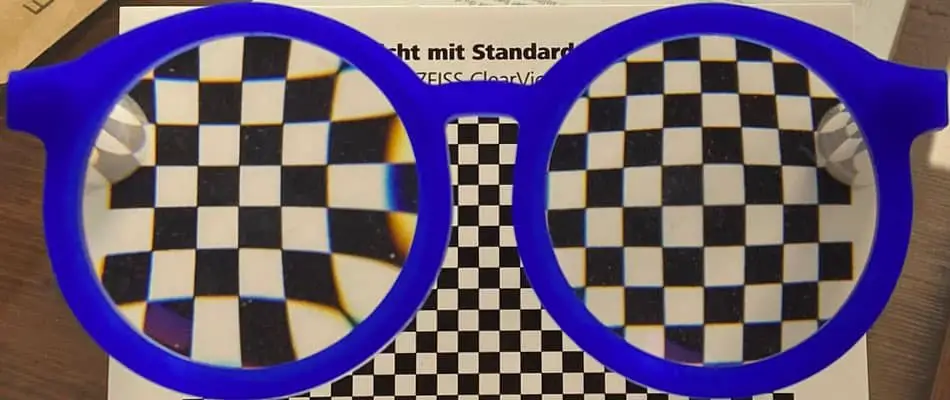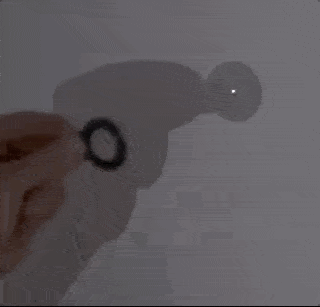This article is about the question whether high end glasses and lenses are worth buying. For this we will show a few examples in terms of eyeglass thickness and materials in the form of pictures to make the differences understandable.
It is important to note that high end eyewear is often differentiated by configurability. This means that with high end products, you can be more responsive to the customer because there are more options that can be incorporated into the manufacturing of the lenses.
In most cases this makes a difference when lens powers exceed the following values:
- Nearsightedness over -4.00 dpt
- Farsightedness over +2,50 dpt
- astigmatism over -1,50 dpt
- Reading support with progressive vision (Add) higher than 1,75 dpt
Depending on the demand on vision, the differences in blur or the size of the sharp field of vision can be perceived earlier or much later. Here it depends on the fit of the glasses in your face and, for example, on your visual performance and the demand on vision and aesthetics of the lens.
High-end Freeform lenses, for example, can be made 10% thinner than aspheric lenses, depending on the prescription. However, if you don’t care about the lens being a little thinner, then High End lenses are not worth it for you in this case.
You can already see that the decision whether high-end lenses or frames are suitable for you should be judged very much on an individual basis. More expensive does not always mean better. Let’s look at a few examples that will help you better understand when it might be worthwhile to switch to high end lenses or frames.
Eyeglass frames that are more expensive are often called high end eyeglasses. However, there are also many labels here whose quality is not good and the price is still high. I will also give a few hints about this later. But first we dedicate ourselves to the examples, when it makes sense to think about high end glasses.

How the Power of Prescription in Your Glasses Can Influence the Choice of High End Lenses
Eyeglass lenses provide sharp vision, but not all eyeglass lenses are the same. Every lens, whether high-end or an inexpensive standard lens, provides sharp vision in the central area. However, as soon as the gaze moves to the periphery, distortions and blurring occur. This is the case with every lens.
You can see this quite easily with the following example. When people look through the lens at an angle, the light also enters their eye at an angle through the lens. When we recreate this situation, we hold the lens between the wall and the light source. The lens then usually collects the light into a perfect focal point. Then the lens can work optimally and the visual impression is brilliant.
However, if the spectacle lens is positioned at an angle to the light incidence, you can observe how the focal point distorts into a line. If you were to look through the lens now, it would be blurry.

The higher the strength of the spectacles, the more clearly these blurs are perceptible. Roughly speaking, we can say that farsighted people with a spectacle value of +2.50, nearsighted people with a value higher than -4.0 diopters and people with a corneal curvature of -1.50 diopters can notice blurring more quickly. So here it is usually worth the extra cost to get a better (high end) lens.
If the value is lower, there are also blurs when looking through the lenses at an angle, but these are usually so small that they are not perceived and a production of high-end lenses is not worth it.
Now, however, not everything is black or white in terms of high end lenses or standard lenses. There are customers who would describe themselves as sensitive in terms of perception.
Usually, these people have very high visual performance and can detect subtleties that are not perceptible at all to others. For example, a visual performance of 20/25 (80%) is considered normal. However, there are also customers who enjoy a visual performance of 20/10 (200%). (By the way, 20/20 visual performance is only an average value).
If someone has such a high visual performance, it may be that even at lower values should be taken to high-end lenses. Simply because blurring or distortion can be perceived much earlier than with someone who has a lower visual performance. In this case, it could already make sense to switch to high-end lenses from a myopia of -3.00 and a hyperopia of +1.75 dpt.
The Fit of the Glasses on the Face (Position of Wear)
In general, each lens is optimized for a specific fit in front of the eye. For standard lenses, these are often the following values:
- Tilt 7°
- Wrap angle 3°
- Vertex distance 12 mm
On average, eyeglass lenses fit like this. And standard lenses cannot be optimized for anything else, because no other information can be included in the production of the lenses. In individual cases, however, the fit can be completely different.
And then this can be taken into account when buying high end eyeglass lenses. For example, it is possible that the manufacturer takes into account the following information in the manufacture of high end eyeglass lenses:
- Tilt 12°
- Wrap angle 1°
- Vertex distance 15 mm
If this angle and distances are not taken into account (compensated), errors will occur depending on the lens thickness. Below you can see the actual set point in diopters, which works optimally with the standard parameters.
Directly below is the compensated value, which would be ideal if the lens sits slightly further from the eye and (3mm) and the angle of the lens is 5° different from the standard RX value.
| Target RX ( Standard ) | +6,00 | ||
| Compensated RX (Optimized for Position of Wear) | +5,78 | -0,33 | 175 |
| Target value ( Standard ) | +4,50 | ||
| Compensated RX (Optimized for Position of Wear) | +3,89 | -0,20 | 5 |
| Target value ( Standard ) | +3,00 | ||
| Compensated RX (Optimized for Position of Wear) | +2,93 | -0,14 | 5 |
As you can see from the results, the error increases with higher eyeglass power. Depending on how high the visual acuity is, such errors are perceived as subjectively strong or less strong.
More precisely, with a standardized lens, the person here would report that the distance would always be slightly out of focus and the image might be clearer overall. With a custom lens, the vision would be clearer because the actual fit (angles and distances) is directly taken into account and the compensated value is incorporated.
Just today on the day I am writing the article, I had a client with an incredible 200% vision, which can cause any slightest error to be perceived due to tilt.
Despite the lower values of almost 2 diopters of farsightedness. Other customers, who have average visual performance, simply cannot perceive these blurs. Through this, they put on the glasses and all is well. Despite the higher spectacle values.
For this reason, if the visual performance is very high, it is often advisable to recommend High End individualized eyeglass lenses instead of the simple standardized versions, even with lower eyeglass values.
The term High End lenses is not protected or written down anywhere. Each manufacturer can mean under it marketing-technically different. Likewise, the optician from whom the lenses are ordered and who also makes marketing for certain lenses.
In this article, High End refers to an individualized free-form technology. Here, the following parameters can be considered that affect the fit:
- Pre-tilt (describes the angle of the center part of the glasses in front of the eyes).
- Frame lens angle (describes the angle of the lenses to each other)
- Pupil distance (horizontal centration)
- Vertical centration
- Different base curves (describes a flat or curved lens)
- Corneal vertex distance or eye pivot point (distance of the lens to the eye)
In addition, optimizations are implemented in terms of the grinding technique, making the lens slightly flatter and giving you a wider field of vision. In addition, the shape of the cornea or the pupil size can also be included in the individualization. Here, some manufacturers advertise significantly improved night vision. But we won’t offer you that, because it simply doesn’t work well.
Is There a Difference in Quality of Eyeglass Lenses?
The differences in the quality of the lenses are present in terms of grinding technology (lens design) and coatings (antireflection coatings, UV protection, antistatic). However, what exactly is offered in the lenses at the optician should always be explained. Even in terms of single vision lenses used in distance glasses or reading glasses, there are very many options that can bring qualitative differences. We list some of them here:
- Spherical design
- Aspherical design
- Biaspherical design
- Multi-apshere
- Individualization in manufacturing in terms of wearing parameters that can be combined with the designs.
However, the question is always whether it makes a difference to the wearer. In general, it can be said that the higher the strength of the glasses, the more it pays to choose higher quality lenses. Some customers notice the difference directly between simple quality designs and higher quality lenses.
Each manufacturer also comes up with slightly different results in terms of optimizations with their own formulas. Because the focus is for example more on a flat aesthetic lens, or maximum field of view, etc..
